The Indian soldier who vanished on a glacier 38 years ago
The widow of a soldier whose body was found on Siachen Glacier this summer always hoped he would ‘come home someday’.
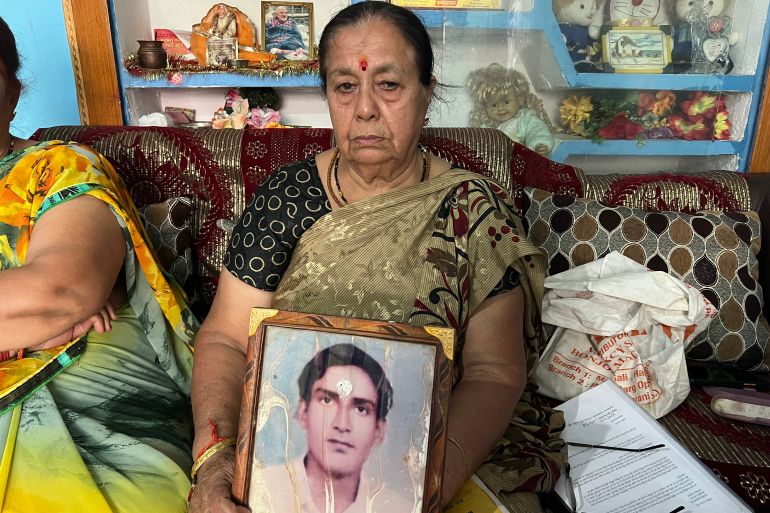
As the climate crisis causes water levels to plummet, riverbeds to dry and glaciers to melt, artefacts like old warships, an ancient city, a mosque, ‘hunger stones‘ and human remains have emerged. This story is part of “Climate artefacts”, a miniseries telling the stories behind the people, places and objects that have been discovered due to drought and warming temperatures.
Listen to this story:
Uttarakhand, India – It was a humid summer night when Shanti Devi received the news she had been waiting to hear for 38 years.
On the evening of August 13 this year, Devi was busy performing a puja, a Hindu prayer, lighting earthen oil lamps and singing religious songs at home when the phone rang.
Devi doesn’t usually answer the phone during prayers but, that day, she did.
“I had a feeling that maybe there will be something important,” she recalled, sitting on a couch in the living room of her yellow, two-storey house in Haldwani, a mountainous city in the northern Indian Himalayan state of Uttarakhand.
The caller was from the state police and asked Devi for her husband’s army identification number, which is typically engraved on a tag worn around the neck.
She knew it by heart: 4164584.
“This [number] was always on my lips,” said the 65-year-old, her eyes welling up.
Devi’s husband Chandrashekhar Harbola was a soldier with the Indian army stationed on the Siachen Glacier. Located on the border between India, Pakistan and China in the western Himalayas, it is one of the world’s highest battlegrounds.
Devi recounted how, on May 29, 1984, Harbola’s 18-man patrol unit was “struck by an avalanche in the darkness of the night”.
While the bodies of 13 soldiers were found after weeks of searching, Harbola and four other men remained missing.
Siachen, like other Himalayan glaciers, has faced accelerated melting as a result of the climate crisis over recent decades.
Some climate experts suggest it could be due to these changing conditions that, on August 13, nearly four decades after Harbola vanished, his remains were discovered by soldiers on a routine patrol. He was identified by the engraved tag found on his body.
After nearly four decades of not knowing what had happened to her husband, Devi was finally able to say goodbye. “It was a long 38 years of waiting, grieving, mourning all alone,” she reflected.
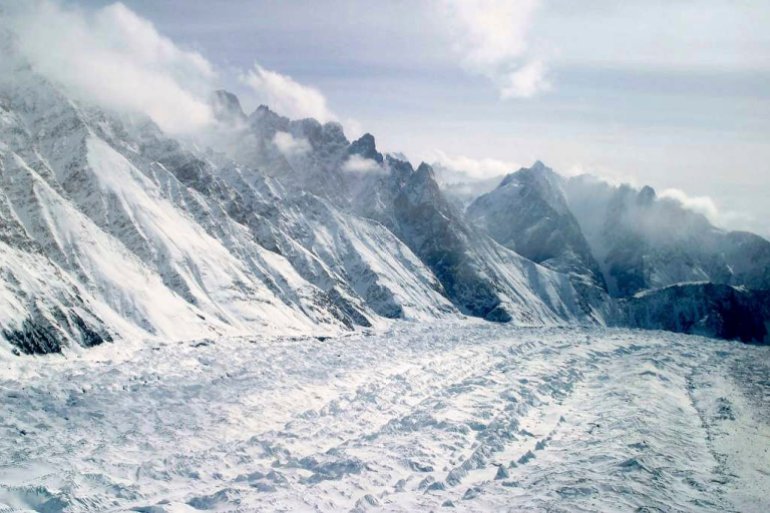
‘Operation Meghdoot’
Harbola had been posted to the Siachen Glacier as part of “Operation Meghdoot”, launched by the Indian army to occupy the glacier and block the Pakistani army from accessing key passes and ridges.
Harbola, then 30, was a member of the 19 Kumaon battalion, which belonged to one of India’s oldest infantry regiments, founded in 1813. His unit was stationed on the icy terrain of the 75km (47-mile) long glacier, the second-longest outside the polar regions, at the punishing height of 6,400 metres (21,000 feet).
Before 1984, only mountaineers climbed the glacier but, that year, India took control of the border territory which is also claimed by Pakistan. The occupation led to intermittent small-scale confrontations and skirmishes between soldiers from both sides until a ceasefire agreement in 2003. Today, the countries maintain a combined presence of nearly 5,000 troops on the glacier and more than 150 outposts, with India controlling the larger portion.
Siachen, considered part of the “third pole” for its frozen water reserves, is among the five largest glaciers in the Karakoram Range – part of the Himalayas – in the Kashmir region which spans the borders of India, Pakistan, and China.
A former Indian army colonel, who spent three months on the glacier in 1984, spoke to Al Jazeera on the condition of anonymity and described how back then, “knowledge of the terrain was limited to the maps” and no one really understood what it meant to live in that environment.
Extremely harsh weather, whip-fast winds, subzero temperatures, and “deep crevices that swallowed men and material like a bolt from below”, posed terrible challenges for soldiers stationed at these heights. Soldiers did not have adequate clothing or the right food or equipment. “Many fell in the crevices due to poor navigational aids,” explained the former colonel.
All of this took a heavy toll as the first soldiers deployed suffered from frostbite, snow blindness, altitude sickness, and other ailments.
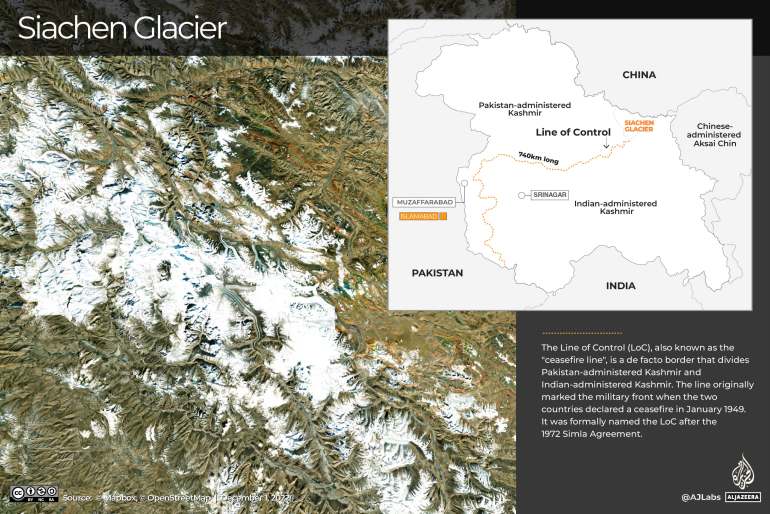
The colonel said that initially 130 men were sent to the glacier. Over time, equipment improved. But avalanches, harsh winds, low oxygen and freezing temperatures that fall as low as -50C (-58F) in winter are still challenges on the barren land of rocks and ice.
Devi, who was 18 when she married Harbola in 1976, says she used to insist that she and her two young daughters visit him wherever he was stationed. But Harbola, who wrote letters to her because telephone calls were harder to get back then, hadn’t told her about his Siachen posting. In fact, before his disappearance, Devi had “no idea” what Siachen was or that her husband had been sent to one of the toughest terrains in the world.
The last time she and her daughters saw Harbola was in October 1983, eight months before the icefall. Harbola had been on Siachen just one month when the avalanche hit.
Twelve days after the avalanche, Devi was collecting water from a tap in her village when a postman delivered a telegram saying her husband was missing.
“I was frozen for a moment. That day changed my whole life,” Devi recalled.
“Not knowing whether he was dead or alive, or that it happened in a tough area where searching and travelling was difficult, it took a toll on me,” she added.
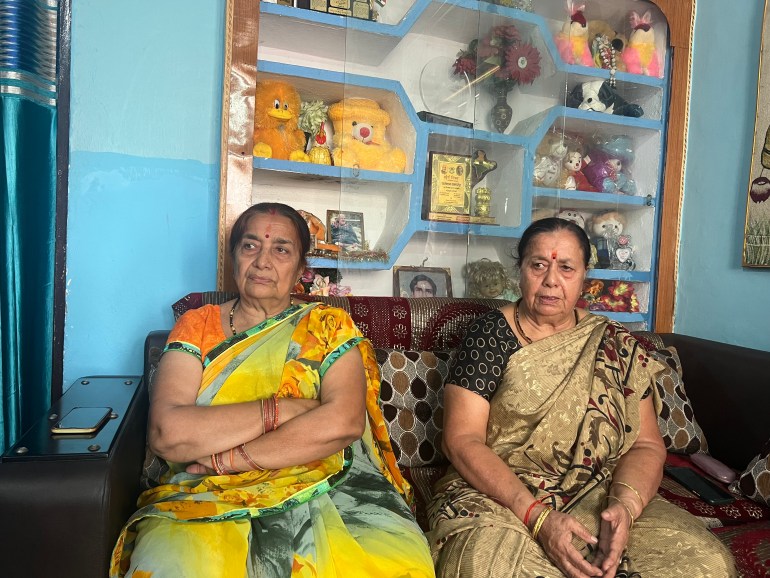
Hoping for news
On that evening in August, the first brief call was followed by two more seeking details like family members’ names and ages.
The last caller rang at midnight and asked for the family’s address.
Later, Devi, who was confused by the calls, was in the living room with her eldest daughter when her daughter received a message saying her father’s body had been found.
“Perhaps the police did not want to inform me directly because it could have been a shock to me,” Devi reflected.
Initially, the mother and daughter did not know how to react.
“There was joy as well as grief,” Devi explained as she sat among her husband’s trophies and certificates and a book about the conflict in Siachen that mentions him. Portraits of a clean-shaven Harbola in a white shirt hung on the wall.
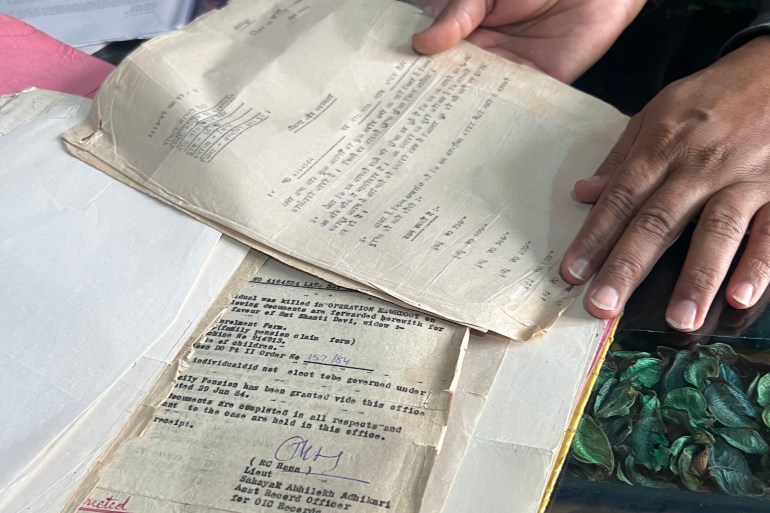
Wearing a black and gold sari, Devi sat with her 19-year-old granddaughter and her brother, 55, and sister, 60, who live next door.
She spoke calmly but as she recalled the decades of not knowing what had happened to her husband, her eyes grew moist and she paused.
“All these years, different thoughts used to come to mind. Sometimes I would think: ‘Maybe he is not dead. Maybe he will come home.’ And other times, thoughts like him being captured by the enemies would hit me,” said Devi as tears flowed down her cheeks. “I used to imagine all kinds of scenarios. I was hoping that someday news from him will come.”
When Harbola’s body arrived home on August 17, Devi felt her nearly four-decade wait had ended. A fresh wave of grief hit the family but there was also closure.
“If someone is dead, you can eventually try to come to terms with reality,” she explained.
“Hundreds of people came and paid respect to him,” she said, adding that Harbola was given full military honours, with his remains escorted home in a military convoy and a gun salute.
Harbola’s childhood friends, former colleagues, families of soldiers who were with him on the glacier, neighbours, government officials, and politicians came to bid him farewell.
“Everyone was in tears and welcomed him home for the last time,” Devi said.
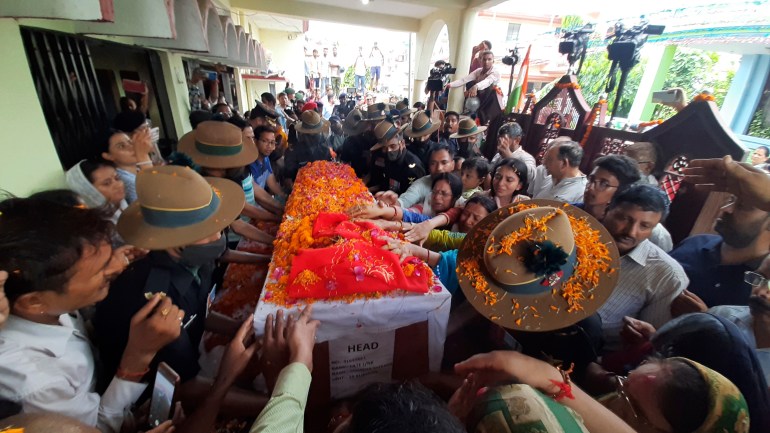
‘No one to share my life’
Devi remembers her husband as always smiling – the kindest person she has ever known.
“He would always speak softly,” she recalled. The couple spent a total of one year together out of the eight before he disappeared, seeing each other for a month or two whenever Harbola was able to come home from his remote military postings in Kashmir.
“I always wanted to be around him, but he did not take us along. The distance and being cut off from him was terrible. I would wait for news from him for months. I feel being the wife of an army man is a very difficult thing.”
When Harbola disappeared, Devi felt helpless.
“We could not do anything,” she said. Her brother-in-law, who was also in the army, managed to go to Siachen for a month and searched for him with other soldiers.
“I felt alone after he was gone, I had no one to share my life, my happiness, or my grief. I would weep and carry on with the routines of life,” she said.
After her husband’s death, Devi, a graduate in social science, started working as a nurse. Although she received some money when Harbola died, she supported her family through her work and raised her daughters on her own. But she felt she never had enough money to fulfil her daughters’ dreams, with the younger one wanting to study in another state.
“In 1993, I shifted to the city from the village. My daughters would always ask: ‘Papa kub ayay gay [When will father come]?’ I would say he was posted far away, until they grew up and understood what had happened to him,” she said.
As a single parent, she took care of her daughters’ educations and marriages, which is often an immense financial and social burden. For Devi it was the “biggest task”.
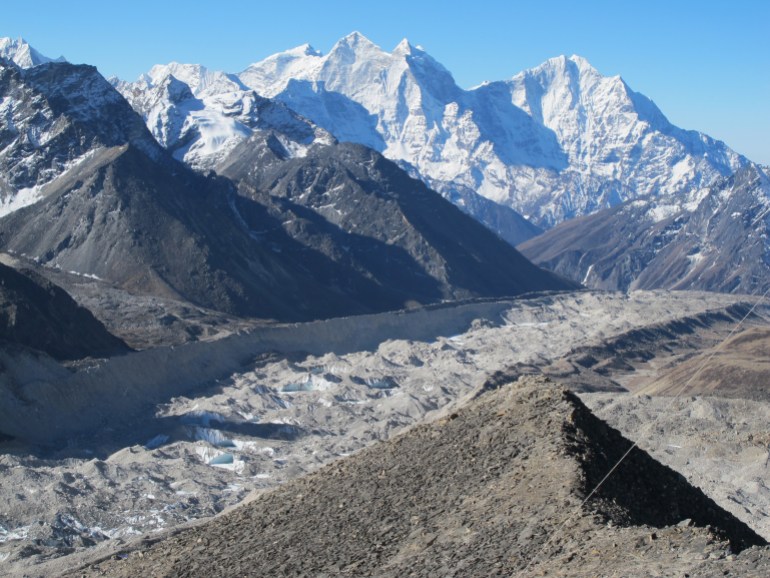
Shifting landscape, melting glaciers
Siachen, the place where Harbola died, means “habitat of roses”. “Sia” in the Balti language – spoken in parts of Ladakh and Gilgit-Baltistan in Pakistan-administered Kashmir – refers to the abundance of wild pink roses that grow in the shrubby areas below the glaciated terrain. “Chen” refers to things found in abundance.
Since 1984, an estimated 2,700 Indian and Pakistani soldiers have died there, mostly due to exposure, avalanches and other challenges associated with the harsh, high-altitude environment.
In 2012, 140 people, including 129 Pakistani soldiers and 11 civilians, were killed in an avalanche, the highest number of deaths from a single incident. Icefalls have claimed more lives, including at least four Indian soldiers and two civilians in 2019.
India and Pakistan have spoken about demilitarising the area but with little progress. India spends $1m a day to maintain its military presence.
Meanwhile, for soldiers stationed on the glacier, the already harsh environment around them is shifting and could get more perilous.
According to climate experts in the region, global warming-related glacier melt could be linked to the discovery of Harbola’s body and that of another Indian soldier, Tukaram V Patil, who was found in 2014 after having been missing for 21 years.
In a warming world, Himalayan glaciers have faced accelerated mass loss in recent decades.
According to a study published in Nature last December, compared with the previous seven centuries, glaciers across the Himalayas shrunk 10 times faster over the past 40 years. The study of nearly 15,000 glaciers found that the melt is faster in the Himalayas than in other parts of the world.
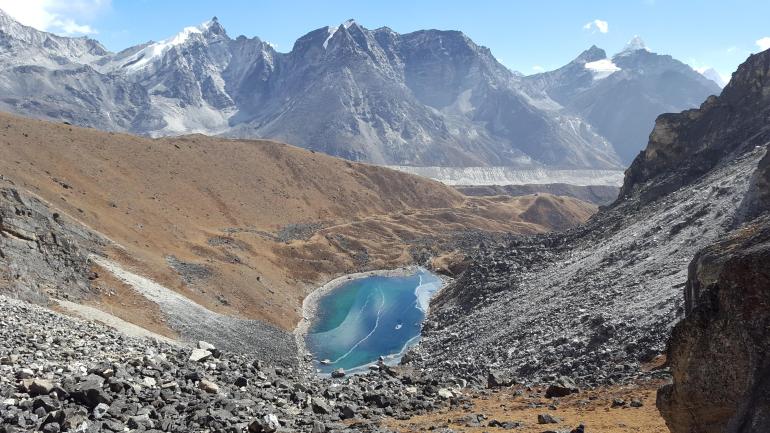
“Himalayan glaciers are melting faster now than at any time in recent history, and the melt rate is accelerating through time,” Duncan Quincey, a professor of glaciology at the University of Leeds in the UK and one of the study’s co-authors, told Al Jazeera.
Glaciers and snow act as water reservoirs or “towers”, and accelerated melt threatens the water supply and agricultural activities of the 1.5 billion people in South Asia who depend on the freshwater rivers originating in the Himalayas.
In the short term, an increased amount of meltwater will sustain river flows, but as the ice reservoir diminishes, water availability will decline, he says.
“There will be a greater risk of water shortages, which will impact food security [from a lack of irrigation] and energy production [via hydropower],” Quincey says, adding that as the ice recedes, it leaves behind an increasingly dynamic and hazardous mountain environment.
“We can expect to see an increase in glacial lake formation and in sudden glacier collapse or ice avalanche events. This is a situation being repeated in mountain environments across the world, not just the Himalayas,” he explained.
Quincey said the discovery of bodies and human-made objects in areas with glacier melt is a symptom of ice receding, but even in a natural cycle of mass accumulation and loss, previously buried items would emerge.
“It is difficult to directly link the appearance of a body [or other objects] with accelerated melt in a warming climate,” he said. “But certainly the rapidity with which glacier ice is now melting we can expect to see any objects currently hidden with the ice interiors to be revealed sooner.”
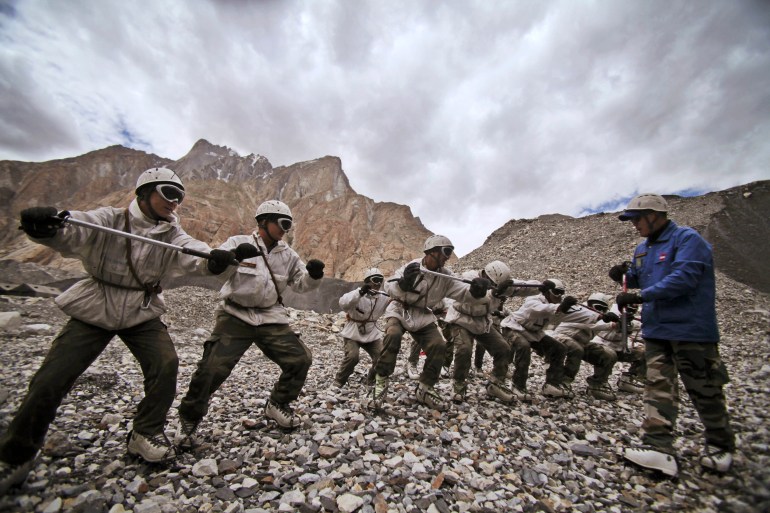
Visible climate change
Sonam Wangchuk is an engineer and climate activist based in the Ladakh region, which sits in the lap of the Himalayas.
Wangchuk, who developed a water solution in Ladakh by building tall ice sculptures that gradually melt and release winter meltwater in the spring for crops, believes the discovery of Harbola’s remains in Siachen could be a sign of melting glaciers.
The impact of the melt is already evident in Ladakh where people rely on the glaciers for water, according to Wangchuk.
“The impact of climate change is visible,” he said, adding that already some villagers have had to abandon their homes due to water supply disruptions.
“In Ladakh, we can see less and less water in the springtime,” said Wangchuk, referring to how smaller glaciers have disappeared in some areas. But with the melting in other areas, he says: “In summer there are floods. We are facing drought in spring and floods in summer.”
“The rate of glacier shrinkage and ice loss is slightly lower in the southern central Himalayas compared to the western and eastern Himalayas,” said Sudeep Thakuri, a climate scientist and dean of the faculty of science at Mid-West University in Nepal. Siachen is part of the western Himalayas.
The impact of melt on the water supply will only get worse, he explained.
The Siachen Glacier is a crucial source of freshwater for the Indian subcontinent. It is the source of the Shyok and Nubra Rivers in the Ladakh region which feed the Indus River – an essential source of water for both India and Pakistan.
“Study shows that the Siachen Glacier, though it did not change much in the surface area in the last few decades, has experienced significant ice loss. The glacier has experienced 30 metres [98 feet] per decade ice thickness loss in the last decades,” Thakuri said.
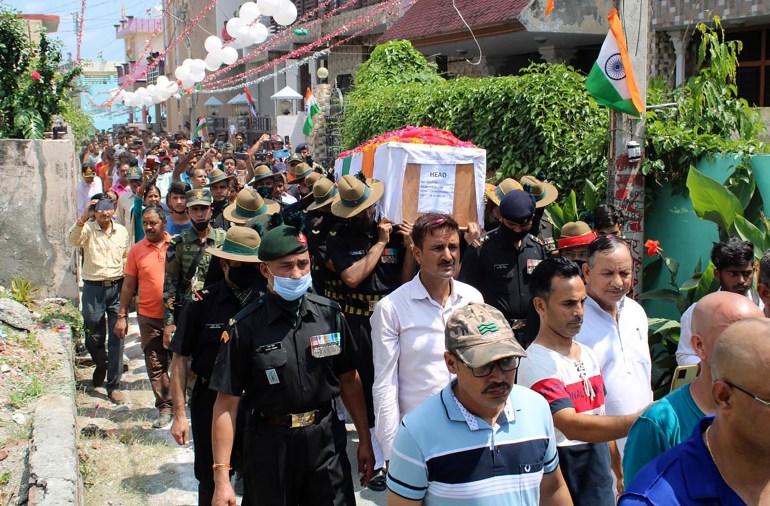
‘Inhospitable terrain’
The four other families whose sons went missing on the Siachen with Harbola also live in Uttarakhand state. Devi says when Harbola’s body came home, it sparked hope for the families that the bodies of their kin would also be found.
“It is painful when a member of your family is missing for so long, you do not know whether they are dead or alive. These people are also suffering the same pain,” she said.
Harbola returned home in a coffin and was cremated.
When Harbola’s body was found, Devi said, her daughters, now aged 44 and 41, said their father was coming home, for the first time.
“It made me very emotional. They had always been waiting for him,” she said.
Devi only learned from Harbola’s colleagues what the conditions in Siachen were like after her husband’s death.
“At that time, they did not have proper clothes or infrastructure to survive on the coldest, barren battlefield on earth,” Devi explained.
She believes her husband was fighting two battles, but most of all, he was up against a formidable environment.
“He was fighting an inhospitable terrain,” she said. “I am proud of my brave husband.”